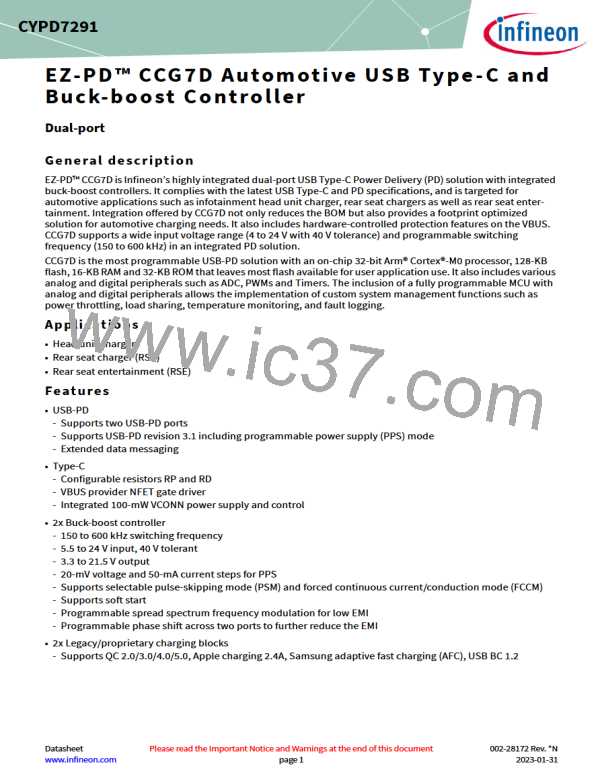EZ-PD™ CCG7D Automotive USB Type-C and Buck-boost Controller
Dual-port
Functional overview
1.2.9
VBAT to ground short protection
CCG7D devices can protect against high currents through the Type-C return (ground) path. A NFET and a current
sense resistor are placed in series with the ground return path from the Type-C connector as shown in Figure 1.
This resistor senses the current, and if it exceeds the firmware-configured threshold, the NFET is turned off to
interrupt the current. This protects against overcurrent conditions caused by external faults (for example, if the
Type-C connector ground is accidentally connected to the car’s battery). The current sense can be implemented
with either a single-ended connection (referenced to internal ground) or with a true differential connection (see
CSN connection in Figure 1). The differential connection provides better current measurement accuracy but uses
an extra pin that can otherwise be repurposed as a GPIO. In the event of VBAT to ground short protection, CCG7D
can be configured to shut down the series FET between the Type-C receptacle ground and the system ground.
The recovery and retry mechanism can be customized using application firmware.
PGND
CSN
(optional)
5 m
GND
CSP
GPIO
Figure 1
VBUS to ground short circuit protection
1.2.10
VBUS to CC short protection
CCG7D’s CC pins have integrated protection from accidental shorts to high-voltage VBUS and VBAT. CCG7D
devices can handle up to 24 V external voltage on its CC pins without damage. In the event an over-voltage is
detected on the CC pin, CCG7D can be configured to shut down the Type-C port completely. The port will resume
normal operation once the CC voltage detected is within normal range.
Datasheet
7
002-28172 Rev. *N
2023-01-31

 INFINEON [ Infineon ]
INFINEON [ Infineon ]